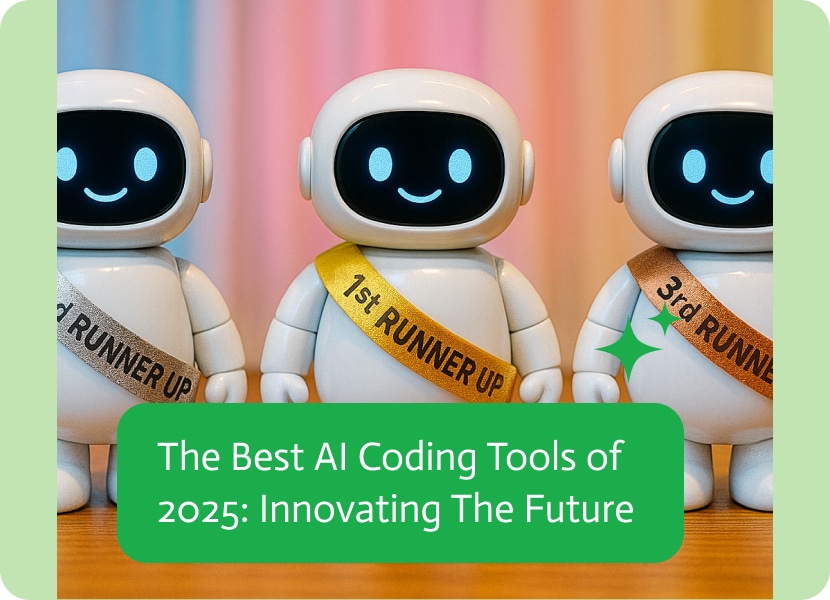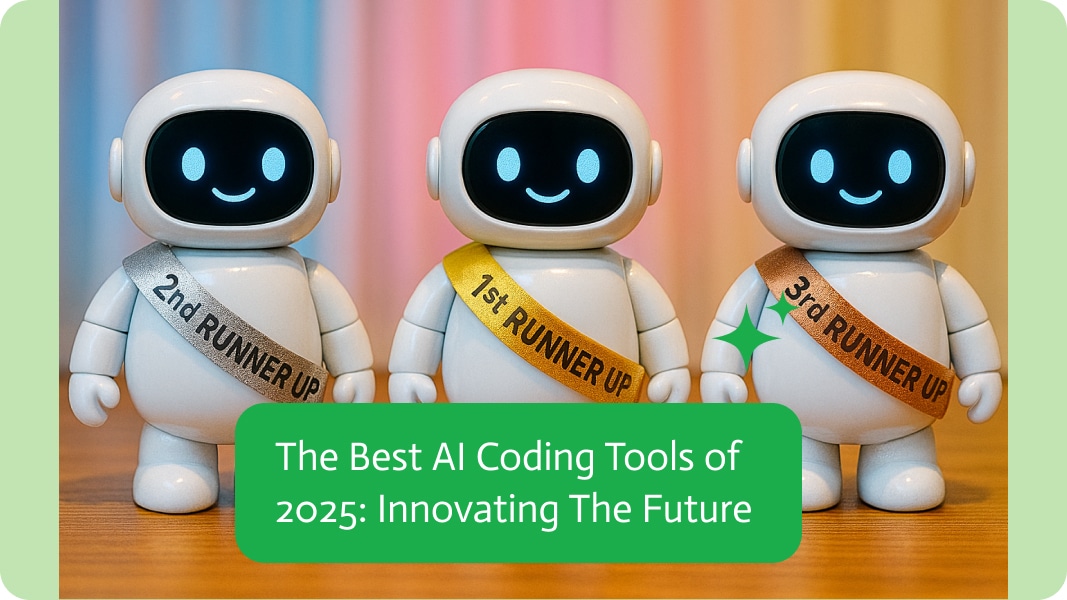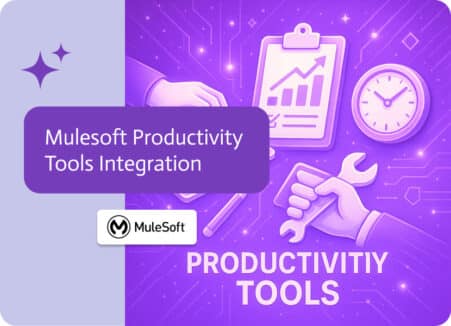

The Best AI Coding Tools of 2025: Innovating Software Development
Okay, so it’s 2025, and AI has totally changed how we make software. Stuff that used to be sci-fi, like AI writing Python, fixing bugs, or even creating entire apps, is now just part of the job. But it’s not merely giving coders a helping hand, it’s opening up software creation to anyone, from entrepreneurs with innovative ideas to pros tackling massive systems.
Noca’s No-Code Prowess
Emerging as a fresh face in the AI coding landscape, Noca.ai is quickly stamping its mark, particularly in the realm of enterprise-level integration that features simple automations, not to mention a strong no-code prompting philosophy.
Noca lets anyone in the business automate tricky tasks and link different tools without touching a line of code. Picture onboarding staff, tracking contracts, or handling invoices across systems such as Salesforce, SAP, or even older ERPs—now you can do it all automatically. Just type what you want in plain language, and Noca’s built-in AI figures out the steps and pulls the plugs together. In many ways, Noca acts as an AI employee, taking over repetitive tasks and ensuring workflows are executed consistently without oversight. That ease of use changes the game for ops, HR, marketing, and sales groups who need custom fixes but don’t know how to code.
For seasoned developers and even overworked IT teams, Noca is a turbocharged playground for setting up complex integrations and automations faster than ever. It goes farther than the usual iPaaS because its AI agents grasp business goals, suggest the smoothest flows, and adjust on the fly. The result? You roll out cross-system automations sooner, cut the endless manual patching, and gain complete control over how work moves. Because it can touch nearly any API-based tool, Noca.ai fits perfectly into today’s wired enterprise.
The Full-Stack App Generators
These tools take your idea and spin it into a working app, usually needing only a little hands-on coding.
Lovable (lovable.dev)
Lovable is a text-to-app platform that does the job quite well, you simply describe the app you want in everyday language, say, Build an e-commerce site with user login and product pages, and it spits out the basic code for a full-stack setup, usually React-Vite on the front end and Supabase on the back end. From there, you keep tweaking the app just by chatting with Lovable.
Seasoned developers would appreciate Lovable, once the code has been generated, you export it straight to GitHub, so teams can customize or integrate it into their current workflow. It’s also a fast way to play with a new idea or lay down the scaffolding for a feature that would usually take hours.
The Intelligent Code Companions
Imagine writing code side by side with a super-smart buddy that’s always available. These AI companions slide right into your preferred tools and give tips in real time as you type.
GitHub Copilot
Think of Copilot as the patient teacher you always wanted. When you try a fresh language, it feeds you suggestions and shows the right syntax, and handy patterns. The “Copilot Chat” lets you shoot questions at it, snag simple explanations, or even tidy up a messy code block.
Still riding high as the industry favorite in 2025, Copilot reads the whole project-not just one file-so it studies your style and adapts on the fly. With support for over forty languages, it whips up boilerplate, finishes tricky algorithms, builds unit tests, and even wires up API calls, slicing development time in half. The chat feature doubles as a living FAQ and a quick refactoring guru.
Amazon Q Developer (formerly CodeWhisperer)
Planning to build in the cloud, especially on AWS? Amazon Q Developer is hard to beat. It speaks AWS fluently, serving up secure code using best practices. It doesn’t matter if you need a serverless function, a database query, or a safe sign-in flow, it turns cloud coding into a weekend project.
For developers who spend most of their time in AWS, Amazon Q Developer feels like having a super-smart teammate. It plugs right into AWS tools, points out ways to save on cloud bills, spots security holes as they pop up, and keeps track of code in a variety of repos in big company projects.
Google Gemini Code Assist (part of Duet AI for Developers)
Powered by Google’s latest Gemini LLM, Code Assist delivers spot-on, context-aware suggestions and completions. You can chat with it in plain language to untangle tricky code, write functions, or hunt down bugs. With the fresh Gemini 2.5 offering both Pro and Flash upgrades, it tackles demanding jobs with much sharper, and more useful tips.
The tool reads your whole project instantly, so it can suggest changes across all the different files instead of just the one you’re editing. Its preview-only agent mode walks you through big, step-by-step jobs, letting you approve every little move, all while it automates the heavy lifting. That level of control and speed makes it especially useful when teams work in the Google ecosystem.
Tabnine
Tabnine takes privacy seriously, offering local AI models that run right on your machine, so your code never leaves the office. Because of that, it still delivers dependable completions in dozens of languages and it does this without the risk of leaking any data.
Tabnine really shines when it learns from your team’s own code, giving you tailored, on-brand suggestions that stick to your internal style guide. With support for a wide array of languages and deployment options that let you run it on-prem or in the cloud, it’s a great match for groups that have tight security or rules.
The AI-Native Editors
These types of tools either embed AI straight into your favorite editor or zoom in on the big jobs that steal the most time.
Cursor
Cursor is basically a VS Code clone that swaps in AI-first features, so the look and feel stay familiar while the smarts run deep. You can chat with it, ask questions, spin up code from plain English, or get quick explanations, all without losing your place.
More than that, Agent Mode can tackle complete workflows, rewrite whole files, or kick off terminal commands only after you say yes. When it pairs full project context with Composer Mode for chat-generated snippets, you get a fast playground for rapid builds or tricky refactors.
Qodo (formerly CodiumAI)
Qodo shines when the goal is polished, bug-free code. It spins up smart, on-point test cases and gives spot-on suggestions for docstrings or dealing with errors, and the Qodo Merge PR-Agent scans pull requests for weak spots, estimates developer hours, and recommends tweaks. All of this really cuts down the time needed for testing and of course, code review.
The Future is Collaborative: Ingenuity Meets AI Power
The top coding tools of 2025 won’t just knock out all the mundane work; they’ll pull developers and AIs into a real partnership.
For Non-Coders:
That long-held idea-everyone-can-code is finally within reach. Inviting menus and smart generators take loose concepts and shape them into working apps, letting fresh voices spark new software dreams.
For Developers:
AI is taking over the boring, repetitive tasks that used to eat up hours, so coders can focus on tough problems, creative system design, and long-term strategy. The ultimate goal is simply to partner with technology in order to boost human skill, not swap it out. By 2025, the best developers will know how to ask clear questions, fine-tune suggestions, and blend AI code with their own.
Because the nifty little tools improve almost overnight, building software is already more natural, faster, and open to more, compared to what it was just a few months ago. Whether you are a newcomer writing your first line or an expert testing wild ideas, the AI landscape of 2025 has something ready to help power your next big project.


